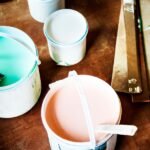Lotus Silk: The Sustainable Luxury Fabric Revolutionizing Eco-Friendly Fashion
When we think of luxury, we don’t always imagine it being kind to the planet. In a world that is now shifting its focus toward sustainability—and where the glaring effects of fast fashion are impossible to ignore—there’s a growing need for alternatives that are both beautiful and responsible. Lotus silk is one of those rare finds: a symbol of eco-friendly luxury that allows us to enjoy craftsmanship and elegance without leaving a heavy footprint on the earth.
Harvested gently from the delicate fibres hidden inside lotus stems, lotus silk represents environmental consciousness at its best. Its production requires no chemicals, industrial pollution, or harmful processing—just skilled hands, traditional knowledge, and respect for nature. In this article, we’ll take a closer look at its origins, how it’s made, and why it offers a glimpse into a future where luxury and sustainability can truly go hand in hand.

In This Article
- The Origins of Lotus Silk
- The Process of Making Lotus Silk from the Stem
- Environmental and Social Impact: A Sustainable Alternative
- Global Embrace of Lotus Silk: Real Stories, Real Impact
- The Economics of Lotus Silk
- Challenges and Future Prospects
- Conclusion:
The Origins of Lotus Silk
According to a study, the story of lotus silk begins in the early 20th century in Kyaingkhan village, located along Myanmar’s Inle Lake. An ethnic Intha woman named Sa Oo discovered that the lotus stems she gathered for temple offerings contained fine, silky fibres. Inspired, she began extracting these fibres to weave robes, known as “kya thingan,” which she offered to Buddhist monks and sacred Buddha images at the Phaung Daw Oo Pagoda.
The process Sa Oo developed was labour-intensive and time-consuming. It is said that she spent an entire year crafting a single robe, highlighting the dedication and skill involved in lotus weaving. After her passing, the practice saw a decline, but her legacy was revived by her relatives, Tun Yee and Ohn Kyi, who established cooperatives to preserve and modernise the tradition. Their efforts ensured that the art of lotus weaving continued, adapting to contemporary times while maintaining its cultural and spiritual essence.
Today, the art of lotus silk weaving continues to thrive in Kyaingkhan and nearby villages like In Paw Khon. Artisans, often women, engage in the labour-intensive process of harvesting lotus stems, extracting fibres, and weaving them into fabric—all by hand. This meticulous craftsmanship not only sustains a unique cultural heritage but also provides livelihoods for local communities.
The Process of Making Lotus Silk from the Stem
1. Harvesting the Lotus Stems
The journey begins during the rainy season, typically from June to November, when lotus stems are at their most supple. Artisans handpick the stems early in the morning to ensure freshness. According to the Online Clothing Study, timely harvesting is crucial, as the fibres must be processed within 24 hours to prevent them from becoming brittle.
2. Extracting the Fibres
Using a sharp knife, artisans make shallow cuts around the stem and gently twist and pull to extract fine, sticky fibres. This delicate process demands precision; cutting too deep can break the fibres. Skilled workers can process around 200 stems per day, with each stem yielding approximately one meter of fibre.
3. Spinning into Yarn
The extracted fibres are then rolled into threads by hand. These threads are spun using traditional tools, such as bamboo spinning frames, to create yarns up to 100 yards in length. Maintaining the right moisture level is essential during this stage to prevent the fibres from drying out and becoming unworkable.
4. Weaving the Fabric
Once spun, the yarn is woven on traditional handlooms. The weaving process can be complex and demands close attention to detail, often requiring up to 14 meticulous steps to produce a single piece of fabric. Artisans must frequently moisten the threads to keep them pliable, ensuring a smooth weave.
5. Finishing Touches
The woven fabric undergoes a natural bleaching process to remove any impurities, followed by sun drying to enhance its lustre. Finally, the fabric is ironed and finished by hand, resulting in a smooth, soft surface that highlights the fabric’s natural sheen.
Creating a single lotus silk scarf is a time-intensive endeavour. According to VietNamNet Global, it can take nearly a month and approximately 4,800 lotus stems to produce a scarf measuring 1.75 meters in length. This meticulous process not only yields a luxurious, breathable, and biodegradable textile but also supports sustainable practices and preserves a rich cultural heritage.

Environmental and Social Impact: A Sustainable Alternative
Gentle on the Earth
Unlike traditional silk, which involves boiling silkworms and using significant amounts of water and chemicals, lotus silk is entirely plant-based. Its production is a manual process that doesn’t rely on electricity, dyes, or harmful chemicals. This means no toxic waste polluting our rivers and no energy-intensive machinery contributing to carbon emissions.
Moreover, lotus plants thrive in aquatic environments, naturally purifying the water bodies they inhabit. This characteristic translates to a production process that is inherently aligned with water conservation principles, making lotus silk an exemplar of water-efficient textile production.
Being plant-based, lotus silk decomposes naturally, reducing textile waste. This means that once a lotus silk garment reaches the end of its life, it returns to the earth without leaving harmful residues.
Empowering Communities
Beyond its environmental benefits, lotus silk production offers socio-economic advantages, particularly for women in rural communities. In Vietnam’s Mekong Delta, for instance, initiatives supported by organisations like the International Union for Conservation of Nature (IUCN) have trained local women in lotus fibre extraction and weaving. These programs not only provide sustainable livelihoods but also contribute to climate change adaptation strategies by promoting flood-friendly crops like lotus.
These initiatives have not only provided women with new skills but also offered them a source of income, fostering economic independence and community development. These programs enhance biodiversity and support climate change adaptation by integrating lotus cultivation into flood management strategies.
Global Embrace of Lotus Silk: Real Stories, Real Impact
Cambodia
Back in 2003, Samatoa Lotus Textiles began as a silk enterprise in Siem Reap, Cambodia. But when droughts hit in 2008, mulberry leaves—the food for silkworms—became scarce. Instead of giving up, Samatoa pivoted to lotus fibre, a move that not only saved the business but also gave birth to a new form of sustainable fashion. Today, Samatoa trains local women in the delicate art of lotus silk weaving, providing them with fair wages and dignified work. Their handmade, chemical-free process has earned global recognition and even a UNESCO Prize for Excellence in 2012.
Vietnam
In Phung Xa village near Hanoi, artisan Phan Thi Thuan has been weaving silk since she was six. In 2017, inspired by a suggestion from a visiting delegate, she ventured into the uncharted territory of lotus silk. It wasn’t easy—her first attempts didn’t meet her standards—but by 2019, she had perfected the craft. Today, Thuan leads a team of mostly women, turning lotus stems into luxurious scarves and traditional ao dai dresses. Her work not only revives a fading craft but also provides stable employment in her community.
India
In Manipur, Bijiyashanti Tongbram, a young entrepreneur with a background in botany, discovered the potential of lotus silk through research and experimentation. Inspired by practices in Myanmar, she began extracting fibres from lotus stems in Loktak Lake and established her enterprise, Sanajing Sana Thambal, in 2018. By training local women in the craft, Tongbram has created a sustainable business model that blends traditional knowledge with modern entrepreneurship. Her efforts have not gone unnoticed; even Prime Minister Narendra Modi has praised her work.
Bangladesh
In the wetlands of Faridpur’s Ronkoil village, Bangladesh is nurturing its own lotus silk industry. Women here are being trained to extract fibres from lotus stems, a skill that not only taps into the country’s natural resources but also empowers low-income families. Within just three days of training, these women have successfully spun high-quality yarn, and within six months, they’ve produced ultra-fine yarn. With multiple harvests possible each month, lotus silk is becoming a promising addition to Bangladesh’s textile industry.
The Economics of Lotus Silk
Due to its labour-intensive production, lotus silk commands premium prices:
| Product | Price Range (USD) | Source |
|---|---|---|
| Scarf | $248 – $799 | Cashmere & Pearls, Acala Stem |
| Dress | $901 – $1,200 | Acala Stem |
| Shirt | $150 – $300 | Etsy |
| Bag | $300 – $600 | Etsy |
Challenges and Future Prospects
While lotus silk holds immense promise, several challenges hinder its widespread adoption:
- Production Limitations: The intricate and time-consuming process limits scalability.
- Cost Factors: High production costs translate to expensive end products, restricting market accessibility.
- Skill Development: Training artisans in lotus silk production is no small feat. It’s a time- and resource-intensive process that requires commitment. For many artisans, mastering the technique can take months of practice, trial, and mentorship.
Despite these challenges, there’s hope. In Vietnam, initiatives like those by the Ministry of Science and Technology and IUCN are supporting training programs, especially for women in the Mekong Delta, to teach lotus fibre extraction and weaving.
Innovations are also emerging. Students in Hanoi have developed a machine to automate fibre extraction, aiming to make production more efficient.
Conclusion:
Lotus silk exemplifies how traditional crafts can be revitalised to meet contemporary sustainability goals. By supporting lotus silk production, consumers and designers contribute to environmental conservation, cultural preservation, and socio-economic development. As the fashion industry continues to evolve, embracing such eco-friendly alternatives will be crucial in shaping a more sustainable and inclusive future.
Actionable Insights
- For Consumers: Seek out lotus silk products to support sustainable fashion and artisan communities.
- For Designers: Incorporate lotus silk into collections to offer eco-friendly luxury options.
- For Policymakers: Invest in training programs and infrastructure to promote lotus silk production and preserve traditional crafts.







